Research of radionuclides in fishery products
In order to investigate the safety of fishery products after the TEPCO FDNPP accident, we measure the radionuclides concentrations in fishery products, such as catches in the Pacific coast, offshore, and inland waters of eastern Japan to gain a better understanding of the actual situation.
Sampling of fishery products and measurement of radionuclides
Fishery samples are caught and collected by fishery cooperative associations, fish markets, and national and prefectural research institutes in various areas of eastern Japan, and then sent to MERI. At MERI, edible parts (muscle, liver, ovary, testis, ets.) are separated from these fishes to prepare samples for measurement.
The radionuclides (iodine-131, cesium-134, cesium-137) were measured with gamma-ray spectrometry using a high purity germanium semiconductor detector in accordance with the radioactivity measurement series method compiled by the Nuclear Regulation Authority. The radionuclides concentrations are given shown as in Bq/kg-wet weight.
These results with information such as the date and locations of collection are reported to the Fisheries Agency, relevant local governments, and fishery organizations within at least a few days. The website of MERI provides results for relevant fishery organizations. |
|
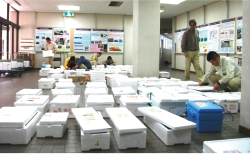 |
| Fishery products from all over eastern Japan |
| |
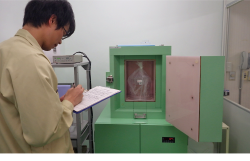 |
| Measurements of γ-ray emitting nuclides with a germanium detector |
|
| |
|
|
Trends of radiocesium concentration
Except for data on Fukushima Prefecture where fishing operations are voluntarily restrained, concentrations, spatial distributions, and temporal variations are being analyzed by using data such as concentrations, sampling dates, and the locations of fishery products, which mainly caught on the Pacific side of eastern Japan. The sea areas where the radiocesium concentrations exceeded the regulation value (100 Bq/kg) are shrinking over time. Since FY2015, five years after the accident, no radionuclides exceeding the regulation value have been detected. |
|
Table: temporal variation of detection rate
for radiocesium (> 100 Bq/kg) in fishery products * |
 |
 |
|
| |
|
|
|
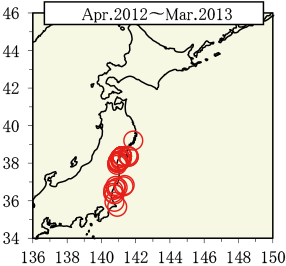 |
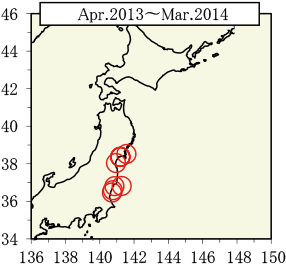 |
 |
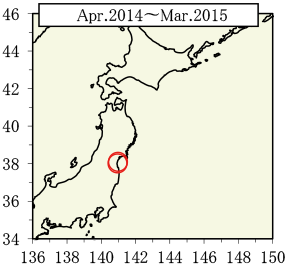 |
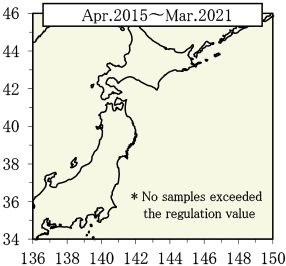 |
|
 |
Figure: temporal variation of catch locations of fishery products in which radiocesium (> 100 Bq/kg-wet weight) was detected
* Data on fishery products from Fukushima Prefecture, where fishing operations are voluntarily restrained, are not included. |
|